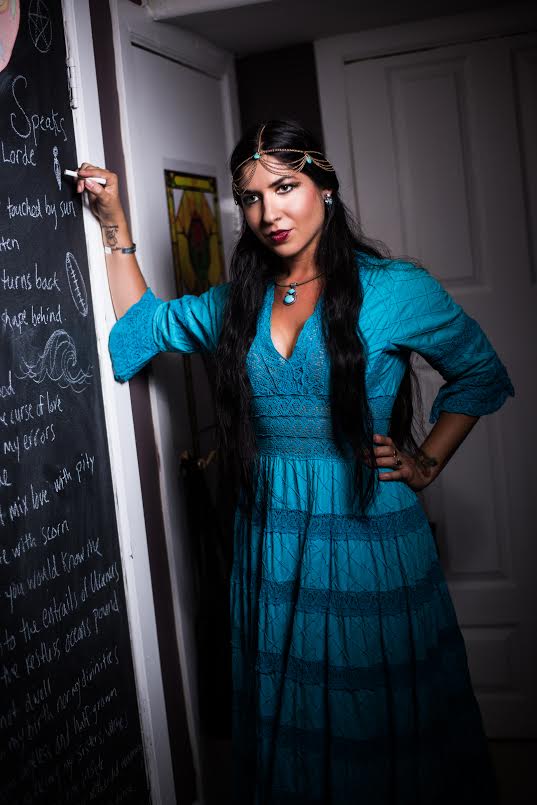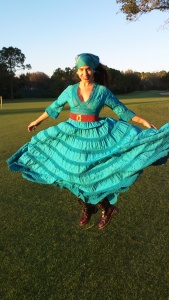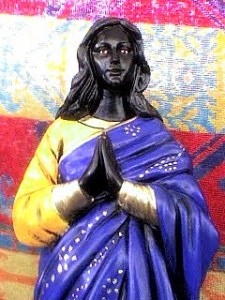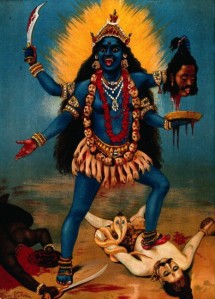
This photo is part of a series by the photographer Aurora Rose de Crosta. More on this later. She and John took many portraits, and I chose this as my favorite and answered this short interview to go along with it. Check out Aurora’s and John’s work at www.auroraandjohn.com. They are a beautiful and talented pair who I am so honored to have worked with.
1). Why did you choose the outfit you did? What about it represents you the most?
I chose this outfit because it’s one of my favorite dresses to wear when I dance. I like to perform a combination of Romani dance and Bellydance, but actually the dress is a Mexican wedding dress from the 1970’s from my favorite vintage store, The Odd Showroom, which was operated by the artist Amity Joy. I am a writer, perhaps first and foremost, but my grandmother taught me her Romani (“Gypsy”) family trades fortune telling, dance, and healing. The word “Gypsy” is a racial slur and reduces us to stereotypes, a dangerous thing in the midst of the current Romani human rights crisis. We are more than fortune tellers and dancers– I am also an English professor, writer, artist, editor, and activist– but these old trades, born of persecution in the centuries after our ancestors left India in the great diaspora, live on too.
2). Do you in general like being photographed? Why?
Yes and no. I did some very small-time modeling when I was young, and I suppose I got used to it, and now I’m a professional art model and have my image rendered in a number of mediums over and over again. If you believe in astrology, I am on the Cancer/Leo cusp (a touch deeper into Leo), and I suppose my relationship with having my picture taken reflects this. I don’t actually know anything about astrology though. I like being a part of an artist’s work, but sometimes it’s hard to look at my own image.
3). How did you feel during the shoot?
Aurora and John were so kind and creative and gave me loving direction while encouraging my own spontaneity. What a joy to work with! Deniz Ataman did my makeup, and she made me feel so glamorous. I loved that we shot in my bedroom too– the whole thing felt so intimate and sweet, and I felt supported in being myself, in all my odd multitudes.
4). Why did you choose the photo you chose?
I am a writer, and I fancy that in this photo I have a crazy face like Jean of Arc in Jules Bastien-Lepage (1879) painting (my paternal grandfather’s favorite), when the angels are telling her what her calling is. When I was a child, I believed that writing was my purpose, and it gave me a reason to live with a fire that I flattered myself by likening to Jean of Arc’s fire. I still might believe that.
5). Were there any particular images you hated? Why?
Anything remotely unflattering I will always hate because my vanity runs wide and deep.

Joan of Arc, Jules Bastien-Lepage, 1879, The Metropolitan Museum of Art


















